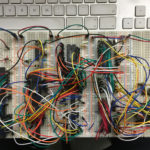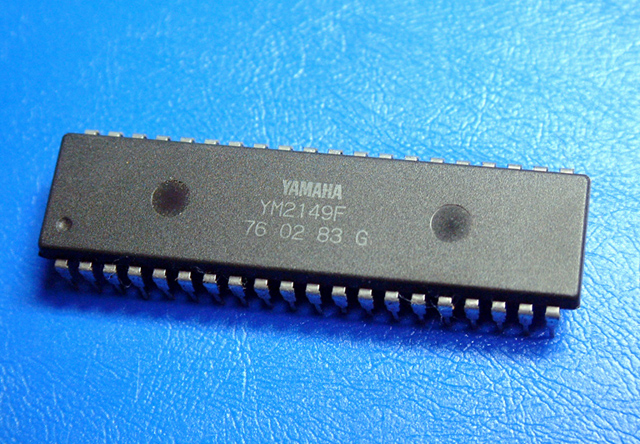I grew up during the golden age of 8-bits computers, I lived the ’80s by typing “listings” and loading games from cassette tapes bought by newspapers kiosks, sharing software with my friends and writing code with paper and pen. I had a Commodore 16, the little brother of the monster computer that was the C64: by the way, I enjoyed it and it was good enough to let me do a lot of experience with BASIC and assembly.
Then I joined the 16-bits platforms (PC XT & Amiga) and, later, the PCs of the ’90s and 2Ks. But the 8-bits are like a mark, they live inside you. So, first I tried to find again those sensations with Arduino and the microcontrollers, and lately the big step has arrived! The step that every nerd, sooner or later, will try to make: build his/her own 8-bits computer! So I started buying components, downloading datasheets of more than 30 years old chips and assemble this thing, trying to see how far I was able to go. I reached this point:
This thing has reached highest peaks, so I decided to stop for a while and try to make some order and to share with you the path I’m doing: first, because this will serve to myself as a diary, to organize and store every information I have collected, and secondly, to let other people find interesting stuff just in case someone will want to replicate it.
Technical features
My computer will be called LM80C: “LM” because they are my initials, “80” because I’m using a Zilog Z80 CPU, and “C” because it should (if everything will work as expected) visualize some sort of color graphics. Below are the main components (at the moment I’m writing):
- CPU: Zilog Z80B
- CPU clock : 4 MHz
- Memory:
- RAM: 32 KB of SRAM
- ROM: 32 KB of EEPROM
- Graphics:
- Texas Instruments TMS9929A graphics processor
- VRAM: 16 KB of SRAM
- resolution: 256×192 pixels
- colors: 16
- sprites: 32 (monochrome)
- video out: PAL RGB
- Audio: Yamaha YM2149F with 3 voices
- I/O:
MOS 6522 (VIA)- Z80 SIO:
- serial periphery with 2x UART ports
- Z80 PIO:
- parallel periphery with 2×8-bits ports
- Z80 CTC:
- programmable timer/counter
- Z80 SIO:
I had to face several issues: I will write about them in future posts. At the moment I’m still reorganizing the informations and soon I will add new articles to let my readers follow my progresses during the building of my computer.





